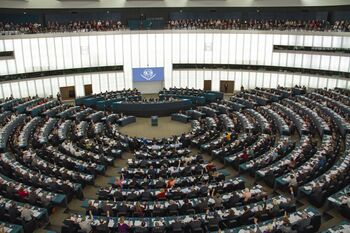United Nations General Assembly (Elezia): Difference between revisions
Jump to navigation
Jump to search
No edit summary |
No edit summary |
||
| Line 1: | Line 1: | ||
{{Region icon Elezia}}{{wip}} | {{Region icon Elezia}}{{wip}} | ||
{{Infobox geopolitical organization | {{Infobox geopolitical organization | ||
| name = '''General Assembly<br><small>of the United Nations</small>{{collapsible list | | name = <!--'''General Assembly<br><small>of the United Nations</small>-->{{collapsible list | ||
| titlestyle = background:transparent;text-align:center;line-height:normal;font-size:84%; | | titlestyle = background:transparent;text-align:center;line-height:normal;font-size:84%; | ||
| title = {{resize|1.25em|United Nations General Assembly}} | | title = {{resize|1.25em|United Nations General Assembly}} | ||
Revision as of 16:58, 29 April 2023
This article is incomplete because it is pending further input from participants, or it is a work-in-progress by one author. Please comment on this article's talk page to share your input, comments and questions. Note: To contribute to this article, you may need to seek help from the author(s) of this page. |
 Meeting room of the General Assembly | |
| Headquarters | UN Complex, Jefferson, United Federation of Triania (International territory) |
| Protocolar language | English |
| Type | Intergovernmental organization |
| Membership | 219 members |
| Leaders | |
• President of the General Assembly | Maria Hasaan |
| Establishment | |
• UN Charter signed | 20 October 1958 |
• Charter entered into force | 1 January 1959 |
The United Nations General Assembly, officially the General Assembly of the United Nations, also known by its abbreviation UN-GA, is the highest decisionmaking body of the United Nations. Consisting of delegates from all member states (currently 219), it meets in regular intervals twice a year. In the meantime, the day-to-day happpenings are handed down to the Security Council.
History
TBA
Meetings
TBA
Voting
TBA
